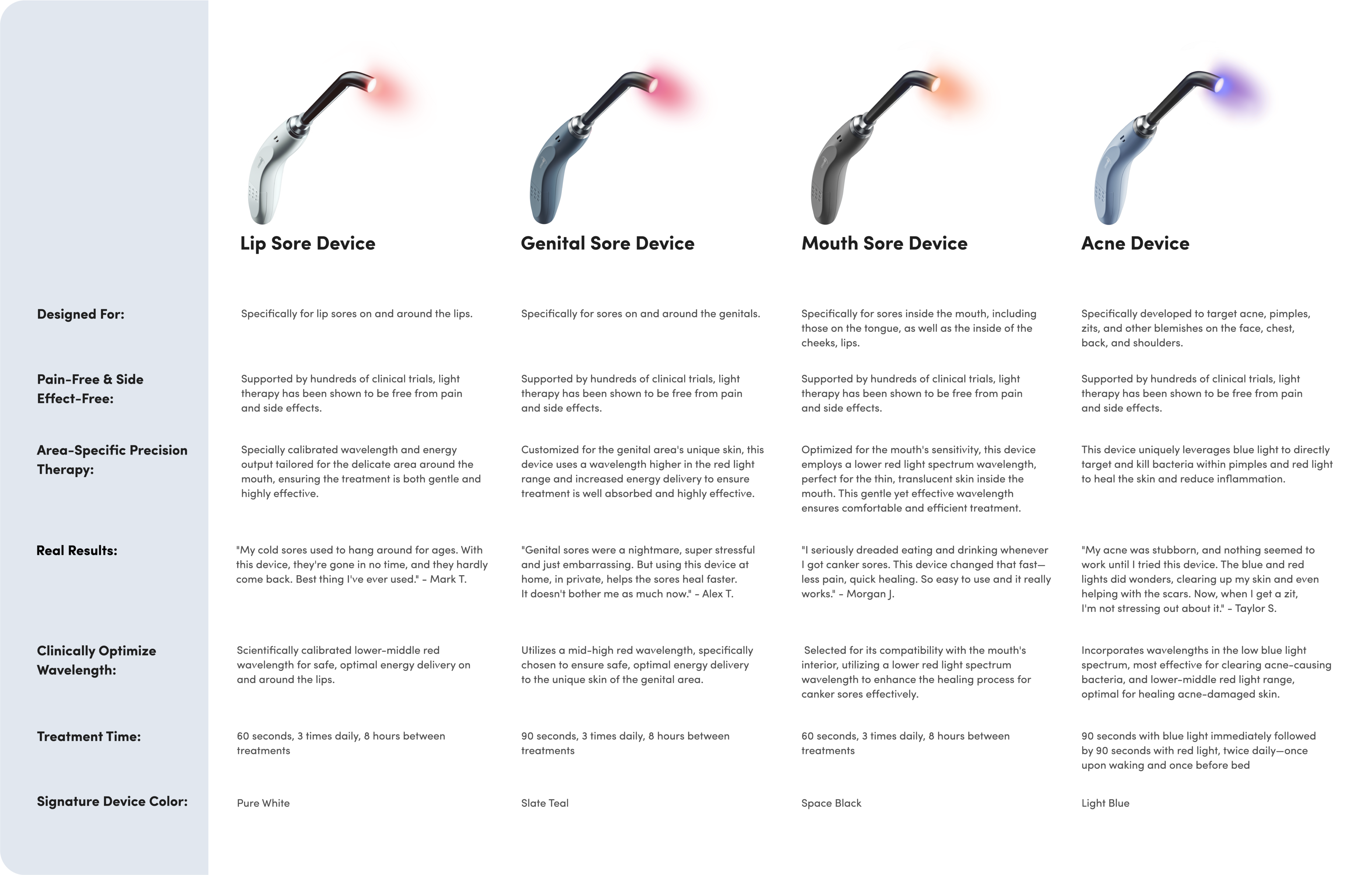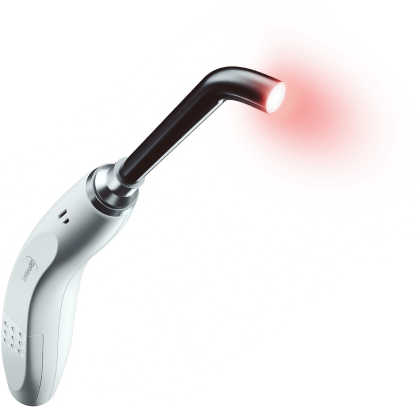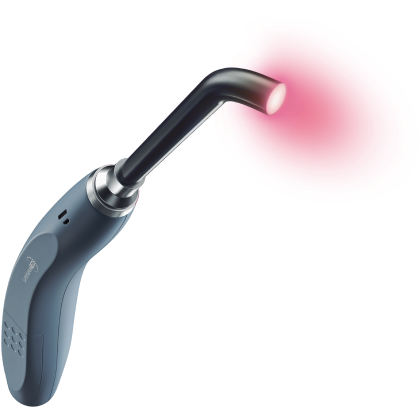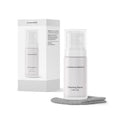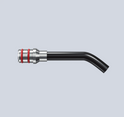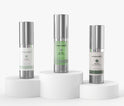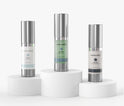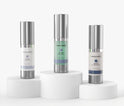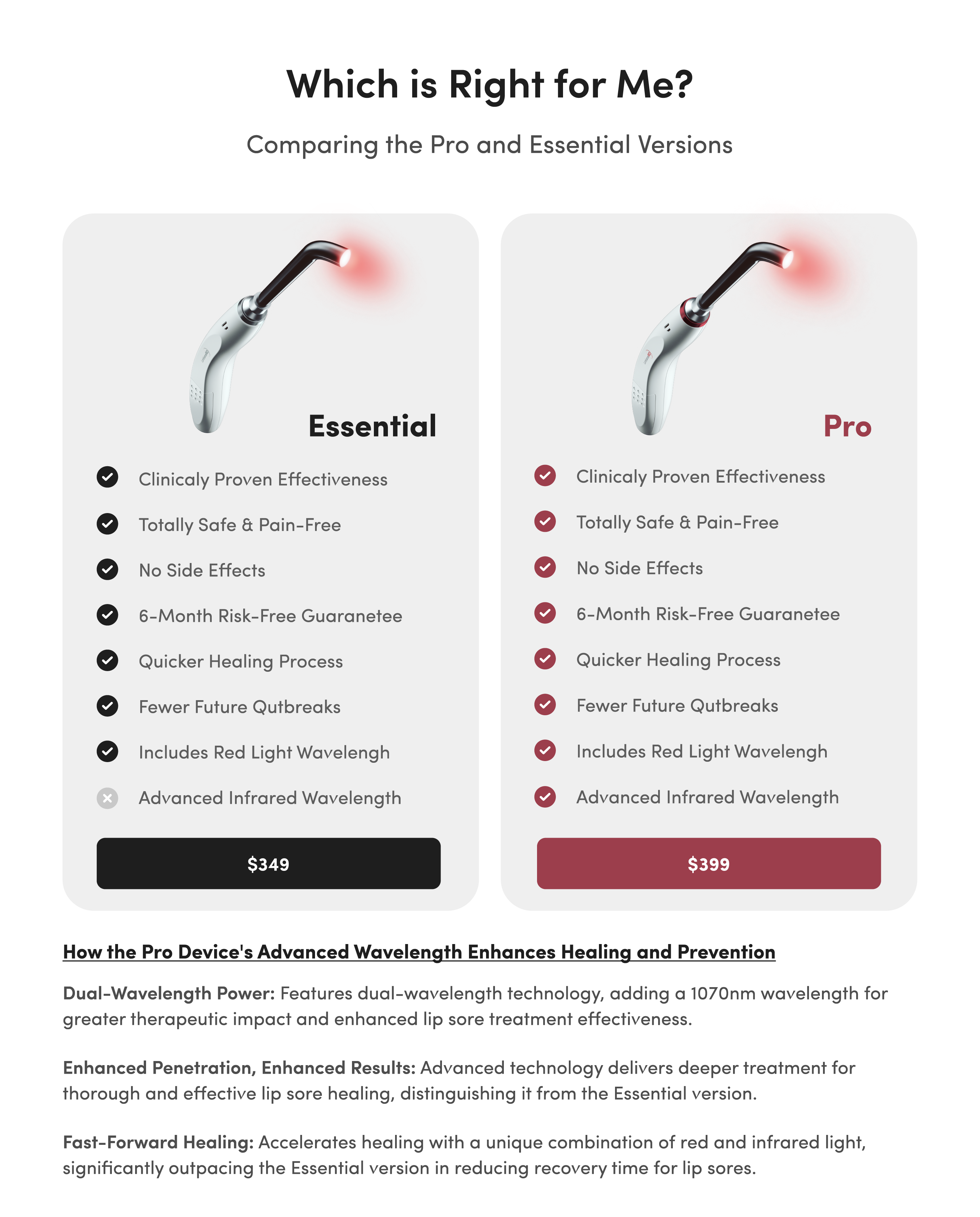Genital Herpes or Pimples? How To Tell the Difference

There's never a time when irritated red bumps are a welcome sight on your body, especially if they’re clustered down there.
The last thing you want to do is strip down for a doctor to investigate your outbreak — and luckily, you may not have to. By learning the differences between genital herpes and acne, you can narrow down the underlying cause of your bumps and start using the appropriate treatments.
Visual Differences Between Pimples and Herpes
If you're concerned about an outbreak around your genitals, it's important to understand the key visual differences between genital herpes and pimples.
Genital herpes typically causes lesions to appear in the genital area, while pimples appear most frequently on the face, neck and back. This is the most significant difference between these two conditions.
Pimples are typically small, red bumps that can be painful and may occur in red clusters. Sometimes the pus on the surface of pimples, or when they burst, appears whitish or milky in color. Herpes lesions, on the other hand, appear like tiny blisters and are slightly yellow on the surface with clear, water-like pus inside.
Can You Get Pimples Around Your Genitals?
Although rare, pimples can appear just about anywhere — including the genitals! What does this mean for you? While bumps and blisters around the genitals are probably the result of a herpes infection, it's possible that pimples are the culprit.
Causes of Pimples
Pimples are caused by bacteria called Cutibacterium Acnes. This bacteria lives on most people's skin without any problem, but it can cause pimples when excess oil and dead skin cells clog up your pores, or due to an ingrown hair.
Pimples and acne are most common among adolescents going through puberty, but many adults suffer from frustrating acne outbreaks as well. Eating greasy, refined and unhealthy foods may cause an increase in sebum production, which triggers bacterial growth and pimples.
Causes of Genital Herpes
The virus that causes genital herpes is called herpes simplex virus type 2 (HSV-2). This virus spreads through skin contact with an infected sore or genital fluids and is considered a sexually transmitted infection. It can even be transmitted when no symptoms are present during skin contact, a phenomenon known as asymptomatic shedding.
The risk of spreading genital herpes depends on a number of factors, some of which are within your control:
- Length of time you've been infected with the herpes virus
- Whether your partner is a man or a woman
- How frequently you use condoms during sex
- Whether you take antiviral medication
Research shows that when one partner has genital herpes and condoms are used only during outbreaks, the other partner becomes infected within a year in up to 10% of couples.
The risk drops significantly with additional precautions like consistent condom and antiviral medication use. One large study reported that only 1.9% of susceptible partners became infected with HSV-2 when given an prescription antiviral medication as a precautionary treatment.
Women who acquire herpes during pregnancy or experience reactivation of the virus during pregnancy also have the potential to transmit HSV to their babies. Fortunately, this is relatively rare. Only about 30 out of every 100,000 births result in HSV transmission to the baby.

Genital Herpes Symptoms
Your first herpes outbreak, known as the initial or primary infection, is usually the most severe. You can recognize a genital herpes outbreak by the appearance of blisters and lesions. These small red bumps and white blisters tend to be grouped closely together on, around or inside the genital region
Additionally, it's common to experience intense flu-like symptoms within seven to 14 days of becoming infected. These symptoms often include:
- Fever and chills
- Aches and pains in the body
- Headache
- Fatigue
- Swollen glands
- Difficult or painful urination
- A tingling sensation in the affected areas
You can expect your initial herpes outbreak to last two to four weeks before clearing up. The good news, at least, is that future outbreaks are usually shorter and less painful than the first.
Pimple Symptoms
Pimples can be painful, swollen, and itchy, but they don't typically have any accompanying symptoms.
This lack of other symptoms alone can help you determine whether your condition is related to herpes or not.
What About Cold Sores?
It's more likely you'll confuse a cold sore with a pimple, but even these have several major differences from pimples.
The same herpes simplex virus that causes genital herpes (HSV-2) can also cause cold sore outbreaks. More commonly, though, another form of the virus, herpes simplex virus type 1 (HSV-1), causes cold sores.
HSV-1 spreads through direct contact with the skin and causes cold sores to develop on the face. After HSV-1 enters the body, it spreads easily to trigger cold sores around the lips and mouth. This virus is highly contagious, especially when oozing blisters are present.
Pimples, on the other hand, are caused by clogged pores or hair follicles blocked by oil and dead skin cells and, possibly, infected with Cutibacterium Acnes. The skin becomes red and inflamed before pimples erupt through the skin.
Unlike cold sores, pimples do not resemble blisters. They are small red bumps on the skin that may have whiteheads or pus inside of them.
Getting Tested for Genital Herpes
The herpes virus doesn't always trigger outbreaks and symptoms, so testing is an important way to monitor your health. The Centers for Disease Control and Prevention (CDC) recommends testing if you are experiencing symptoms that could be related to herpes or if you recently had sex with a new partner who has genital herpes.
There are a few different ways to test for and diagnose herpes:
- Tissue or herpes sore sample
- Polymerase chain reaction (PCR) to test for the presence of herpes DNA
- Blood test to detect the presence of HSV antibodies
Is There a Cure for Genital Herpes?
Though many bacterial infections can be quickly cured with antibiotics, genital herpes is a viral infection with no immediate cure.
Our best hope for a cure may not come from a shot, but may come from genome editing, using a system called CRISPR technology. In 2019, scientists from Harvard Medical School successfully disrupted the herpes simplex virus for the first time and identified weak spots where the virus may be susceptible to gene editing. But while this suggests there's hope for a potential cure, final results are still years or even decades away.
Today, genital herpes treatments offer the best ways to manage the virus and live a normal, enjoyable life.
Genital Herpes Treatment Options
Prescription antiviral treatments are essential tools for managing and controlling the herpes virus, helping to prevent new outbreaks. These medications are primarily used to enhance the healing of sores or blisters associated with herpes, whether during initial or recurrent episodes.
One common antiviral medication works by slowing down or stopping the spread of the virus within the body. Although it does not cure herpes, it significantly aids in the healing process of sores and minimizes the severity of outbreaks. Regular use of this medication can help manage symptoms effectively.
Another widely used antiviral treatment specifically addresses conditions such as genital herpes and shingles. Administered typically twice a day over a course of five days, this medication is known to reduce discomfort and accelerate the healing of sores. It also has the potential to prevent the formation of new sores, offering patients an additional layer of protection against frequent outbreaks.
If you'd like an alternative to medication, here are a few tried-and-true natural ideas to get you started:
- Dry, warm compress using warmed rice in a sock
- Cold compress using an ice pack or soft washcloth filled with ice
- Cornstarch paste
- Topical apple cider vinegar using one-part apple cider vinegar and three-parts warm water
If you want something store-bought, Abreva® is the only FDA-approved topical option for genital herpes. This over-the-counter cream contains non-prescription ingredients shown to accelerate the healing process. It's most effective when used at the first sign of an outbreak and can be applied up to five times a day.
Homeopathic medications are also available over the counter, including FemiClear and Herplex. These treatments claim to achieve fast-acting relief from itching, tingling, pain and burning. FemiClear is a cream, while Herplex comes in tablet form. Homeopathic ingredients come from plants and minerals rather than pharmaceuticals, so they’re considered "alternative" treatments.
A New FDA-Registered HSV-2 Treatment: The Luminance RED
Let's just say it: traditional genital herpes treatment options don't always offer the lasting relief you need, especially during a painful outbreak. That's exactly why the Luminance RED stands out from all other genital herpes treatments.
The Luminance RED is an FDA-registered genital herpes treatment that uses high-powered light treatment to shorten healing time and prevent outbreaks entirely! With just a few 90-second treatments per day, you can discreetly take control of genital herpes.
In fact, when used at the first signs of an emerging outbreak, the Luminance RED can stop your HSV-2 sores from ever forming. Clinical data conclusively shows that high-powered light treatment reduces healing time from 8.2 days to 1.8 days and extends the time before the next recurrence from 124 days to 455 days! No doctor required!






